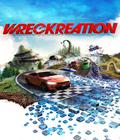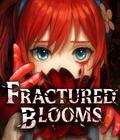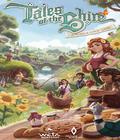When you think of games based on The Lord of the Rings, you tend to think of adventure. It may be a dark hack-and-slash adventure like Shadow of Mordor or The Two Towers. It can be a lighter adventure like Aragorn's Quest or a text adventure like the versions made for the Commodore 64 and ZX Spectrum or a strategy game like War in Middle Earth or The Battle for Middle-Earth. It can even be a LEGO game. A cozy game isn't exactly what comes to mind, but at least Tales of the Shire: A The Lord of the Rings Game does a good job of setting up a cozy game in the one area of the world that fits the genre perfectly.
You start the game as a hobbit who decides to move to the village of Bywater, a short distance away from the more popular village of Hobbiton. You're asleep on a fallen log when you're awoken by a kindly old wizard who offers to take you to your destination aboard his cart. Once you arrive, you move into the home of a hobbit that has since passed, and your job is to get to know everyone and get settled into your new life.
This may be a licensed game, but you shouldn't expect many of the familiar elements of the books or movies. The game takes place after The Hobbit but an undisclosed amount of time before The Lord of the Rings trilogy. As one would have guessed, the wizard who picks you up on the road is Gandalf, but the only other well-known character is Bilbo Baggins because he pens the various descriptions of items and people in the world and because he is seen as a hero by some of the people in the village. Considering that many other licensed cozy games make it a point for the player to be palling around with well-known characters at all times, this is an interesting design choice.
Similar to other cozy games, you'll start off by creating your character, and this is where you'll discover that your options vary wildly. The amount of hair styles seems fine when you realize that hobbits only have curly hair, but there are no options for facial hair despite evidence in the books. The variety of colors for hair and eyes is fine, as are the options for eye and mouth shape and amount of foot hair. The body is more limited, as you only have five types available, and you can't change your height. When it comes to your name, you can go with a preset list of first names or type in a custom one, but last names are limited to what's available. It's a strange limitation given that your last name is never spoken in the game.
The game follows most of the conventions set by modern cozy games. The game sports mainline quests designed to move the story forward, with the ultimate goal of getting Bywater recognized as an official village. These take the longest to get through mostly because they require at least a day or two to pass before getting to the next step and restarting the waiting process. Many side-quests are present, but only if your mailbox alerts you to one or if you happen to pass by a hobbit who has one at that moment. Most of the quests are either of the fetch variety, have you delivering stuff to others, or talk to other hobbits as a favor for others. It's nothing new to the genre, but it isn't played off as endearing when you finish the first major questline and get a preview of how the rest of the game plays out. You can also stumble across landmarks highlighted by sparkles that either let you view the scenery or open up something you can mess with later. If you're not the type of player who wanders around looking for stuff, you'll think that the majority of the game is spent waiting around for things to happen.
One element that is handled nicely is the navigation system. You can still look at your map to determine your destination and put down markers for the place you're headed to, but you won't get an on-screen arrow or markers or even a trail to follow. Instead, the game tries for a more semi-natural approach by having birds land on signposts or bridges and then subtly using their beaks to point where you need to go. This can be a tad too subtle, as you'll often stop and position yourself and the camera at just the correct angle to see which direction the beak is pointing, but at least it fits with the game's overall theme.
Decoration is present but limited to your own hobbit hole. The system is different in that your character can move around while you aim your cursor at the space that needs a new style or item, and you can come to grips with how the system works right away if you treat this like a first- or third-person shooter instead of like any other cozy game. The feature has some neat additions, such as the ability to place the same design on all relevant parts or the automatic removal of all other decorative items if you're removing something, like a table that has stuff on it. Furniture placement also is done with a full 360 degrees in mind, so you aren't restricted to four or eight directions for a chair. The implementation of the decoration system is well done, but it is a shame that you can't visit other hobbit holes to get inspiration from their decorations.
Farming, gathering, and fishing are all present and come with unique traits of their own. Farming can be done on big plots of land and smaller soil beds, and you can influence the growth of other crops if placed close to one another, a neat twist not seen in most other titles. You also need to constantly refill your watering bucket, as you never have enough for more than three crops at a time. It's an annoyance but a relatively small one. Wandering around the village lets you discover various things to gather, such as fallen fruit, spices, and wild vegetables, and you will sometimes run across butterflies that will lead you to those things if you weren't already aware of their presence. As for fishing, the activity is more involved, since you have to actively fight the fish and not get your line snapped while doing so. You can also throw fish back, so you aren't forced to stockpile a bunch of seafood that you aren't going to use.
If the game would have one signature element to call its own, it would be the cooking system, which gets more involved than its peers. You still need to assemble ingredients to make your dish, but now there's a minigame where you'll need to mash buttons and get the meter just right to achieve things like vegetable chunk sizes or overall texture of the dish. Later on, you can also modify the dishes with the use of spices, and each dish can be rated up to five stars depending on how well you texture and spice things when cooking. It is a very involved system that serves as the main reason to play this game if you wanted to play a cooking game that has lower stakes than proper cooking sim titles.
You're mostly engaged in cooking for small get-togethers more than your own benefit, so you'll be writing letters to invite people and then cooking dishes based on what they crave for that day. Considering that this is the only method to improve your friendship levels with other hobbits, you'll send out invites and cook very often in this game. One thing that will trip you up, however, is the tutorial. You're asked to cook the dishes before sending out the invites, and that is risky since you can be burning resources for one dish only to discover that no one you invited wanted it in the first place. The risk is mitigated by the fact that you can store cooked dishes without risk of spoilage, but it is annoying to see that the game teaches you to do this in the wrong order.
Encompassing all of this is the game's treatment of time. There is a day and night cycle, with a full day equating to about 30 real gameplay minutes. You will need to sleep at night, which limits what you can do in a full day, but everyone in the village follows the same schedule. The game also keeps track of seasons, which change the environment and the kind of things you can forage for, making it more than just an aesthetic change.
All of this is well and good, but there are some design choices in Tales of the Shire that go against expectations for a modern cozy game. For example, furniture can't be interacted with. With the exception of your writing desk and your bed, everything you place in your hobbit hole is strictly decorative. Most items look plain instead of slightly eye-catching. While the avian guidance system is nice, there are moments when it doesn't take into account roadblocks that haven't been cleared. It isn't surprising to see the birds lead you down a path toward your desired location only for you to get blocked by brambles or a large fallen log that hasn't been cleared away. This becomes a bigger annoyance when you realize that navigating the world naturally is difficult to do, since the place is so big. Additionally, every place looks too similar, so there are few notable landmarks to use for natural navigation. Crafting is also absent, making this more of a cooking cozy game instead of a more general cozy title.
One of the more egregious design choices is the fact that you're only allowed to interact with a specific set of hobbits. You will see other hobbits in the village, and they'll often engage in idle conversation with one another, but you can't go to them and start a conversation of your own or even greet them like you can with the animals for some reason. Furthermore, unless you are talking to a prominent hobbit that is involved in a quest or you can shop or barter with, speaking with them becomes useless since you only have the option to end a conversation. For a game where friendship is something to be cultivated and already limited by not being able to give gifts to other hobbits (aside from quests and cooking), the inability to engage in some chatter is puzzling.
As far as sound goes, it's very minimalist. It is quite difficult to hear the musical score, no matter how high you turned up the music option in the settings. Once you do, the soundtrack does a good job of producing calming tracks that fit well with the cozy vibe. The game lacks any voices, and it turns to the sound effects to make up for it. The choice makes all of the speaking portions a touch whimsical, since lines are punctuated with cartoon whistles and other sound effects, even if the line being has a mean tone.
Graphically, Tales of the Shire looks fine. The characters go for more of a stylized look, almost like an illustration that you'd find in the classic books. It's something you get used to if you were hoping for something more cartoon-like from a licensed title. The environments are good enough, and the softer color palette for the world makes things blend together naturally. The frame rate is also fine, but it can stutter a touch when visiting new areas, and those with high refresh rate monitors will notice that the game hedges closer to 60fps in busier areas even if you're running high-end gear.
However, the game suffers from some occasional bugs. The villagers that you can't talk to will sometimes spawn into a scene at the same spot, creating a scene where both hobbits will phase in and out until you run into them to separate them. Other hobbits will disappear in front of you, and others will fail to spawn in at all, creating scenes where you see dialogue of idle chatter appearing out of nowhere. Loading the game from a save creates a situation where textures and whole models will take their time to fade into existence, creating moments when the hobbits all walk on top of nothing before the scene loads properly. These things can be fixed via patches, but they are still startling to see, especially since the game had already been delayed.
Steam Deck users will be pleased to know that the game runs on the system. What those players will be disappointed in is how the game seems to struggle on the device. The game will run at 1280x800, while the graphical settings are mostly low with FSR 3 automatically set to Performance mode. Even with that in place, the frame rate fluctuates with the highs around the 40fps, but the lows at less than 20fps with some hitching, and pauses that last for longer than 2 seconds. Battery life is around 90 minutes on a full charge on the LCD version of the Steam Deck, while the fan will kick in at a higher RPM throughout your playtime. Overall, it works but is far from the ideal way to play the game.
By itself, Tales of the Shire: A The Lord of the Rings game is fine. The aesthetic is accurate, and the emphasis on cooking makes it feel very different from many other games of this type. However, the game feels like it is lacking in other areas that are seen as genre staples, making the game feel rather light at first glance. This is before you start to compare the game to other licensed cozy life sims and see that those games have much more to offer before the amount of stuff to do starts to dry up. Again, this game is fine, but there are better examples of the genre.
Score: 6.5/10
More articles about Tales of the Shire: A The Lord of the Rings Game











 Tales Of The Shire is a cozy The Lord of the Rings game set in the Middle-earth universe inspired by the books of J.R.R. Tolkien.
Tales Of The Shire is a cozy The Lord of the Rings game set in the Middle-earth universe inspired by the books of J.R.R. Tolkien.























